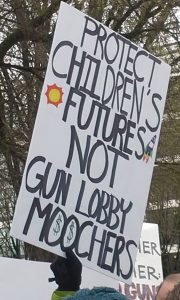 As people march against access to military-style assault weapons and begin to organize a voting campaign, it helps to see the data. While mass shootings, such as the one in the Parkland, Florida school, are a small slice of all gun deaths, it appears to be a tipping point for public policy. “Never again,” as the students say. There seems to be something wrong with having a generation of children growing up in fear that they or their friends might be killed while at school, a mall, a concert or in a movie theater.
As people march against access to military-style assault weapons and begin to organize a voting campaign, it helps to see the data. While mass shootings, such as the one in the Parkland, Florida school, are a small slice of all gun deaths, it appears to be a tipping point for public policy. “Never again,” as the students say. There seems to be something wrong with having a generation of children growing up in fear that they or their friends might be killed while at school, a mall, a concert or in a movie theater.
The data varies depending on how mass shooting is defined; the definition changed from at least 4 people killed to 3 people killed in 2013. It includes school shootings, as well as work shootings and other public settings (malls, nightclub, movie theater, churches, etc), but not killings associated with other crimes, domestic violence, or gang violence. It may or may not include a killing spree. The dates included also can vary. One report begins counting from 1966 and another from 1982; the earlier start date reports more shootings and fatalities.
None of the data sources listed below provide information about the total number of school shootings. Nor does the data account for the full impact on those wounded and those who survived with trauma, nor does the data account for the impact on friends, families, and neighbors.
The Washington Post published data after the Parkland Florida school shooting in February 2018. https://www.washingtonpost.com/graphics/2018/national/mass-shootings-in-america/?utm_term=.22bde03099b3
“In the 50 years before the Texas tower shooting (August 1, 1966), there were just 25 public mass shootings in which four or more people were killed, according to author and criminologist Grant Duwe.”
They summarize the data since 1966:
- 1,077 people have been killed in mass shootings
- 153 shooters, almost all men
- most between the ages of 20-49
- 292 guns were used, most were obtained legally.
- The use of semi-automatic, military style weapons increased dramatically once the ban on those weapons expired in 2004.